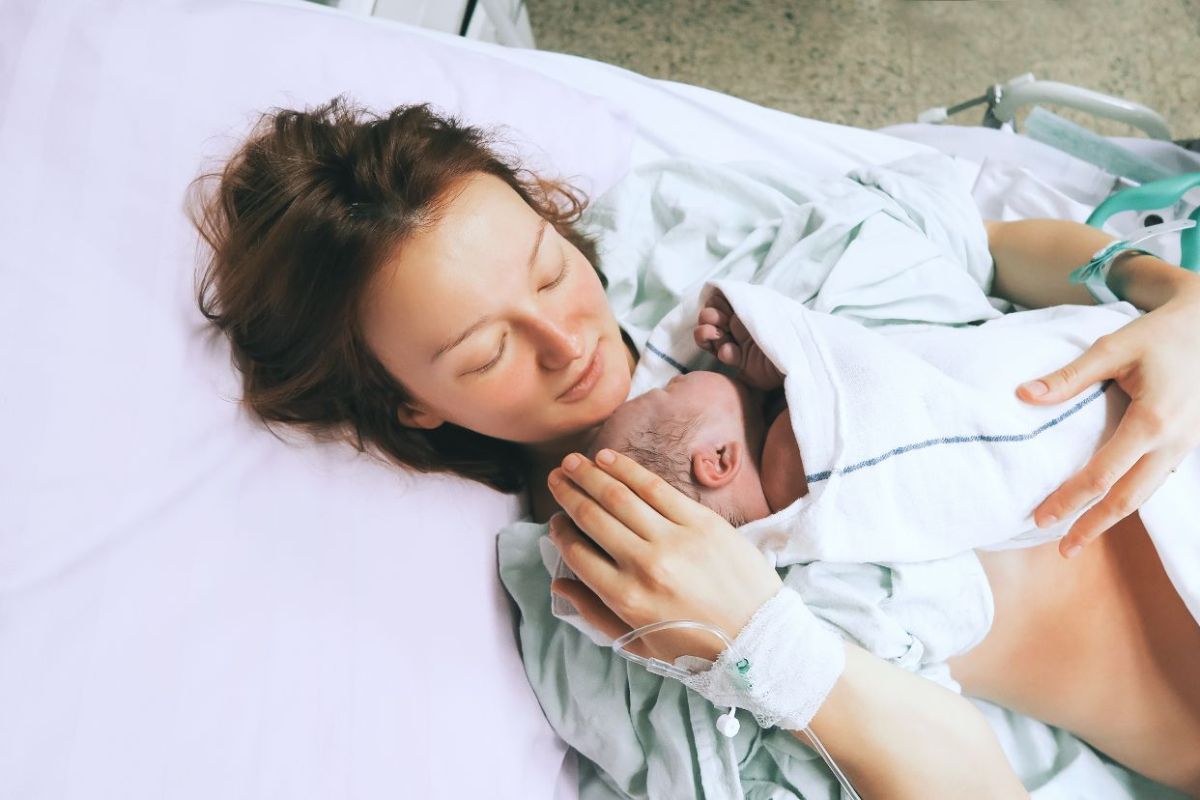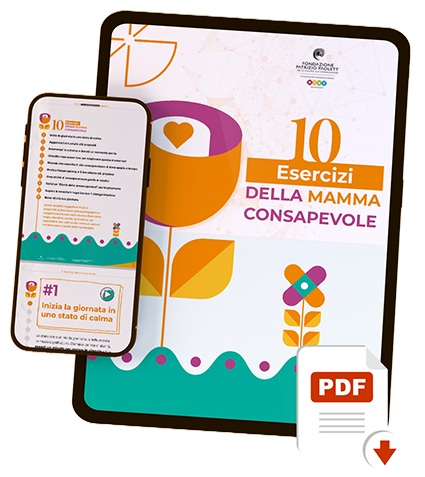
La Giornata Mondiale dei Genitori in Italia fa i conti con la denatalità
In occasione della Giornata Mondiale dei Genitori indetta dalle Nazioni Unite per il 1° giugno 2023 la Fondazione Patrizio Paoletti, che si occupa di ricerca e formazione per il benessere di individui, famiglie e comunità, condivide strumenti per i genitori, come il webinar “Che genitore vuoi essere?”, parte dei programmi di formazione alla genitorialitàLa genitorialità è un concetto ampio e complesso che si ri... Leggi. Come confermato dagli esperti di educazioni a livello delle istituzioni internazionali, infatti, la genitorialità si impara e oggi più che mai sono necessari strumenti formativi.
La ricorrenza del “Global Day of Parents”(la giornata mondiale dei genitori), istituita dalle Nazioni Unite nel 1972, vuole festeggiare il ruolo della coppia nella crescita dei figli, che come genitori sono i primi e i più importanti educatori. Sono i genitori di oggi che formano in modo attivo i bambini e i giovani che guideranno la società di domani.
Ma in Italia oggi il tema della genitorialità si intreccia anche inesorabilmente con quello della (de)natalità che coinvolge il nostro paese. L’attuale situazione demografica spinge a interrogarsi su questioni quali l’impatto e i limiti dell’immigrazione, le sfide legate alla conciliazione tra lavoro e maternità e la necessità di raggiungere un numero di nati pari a 500.000 entro il 2030.
Denatalità, scuole chiuse e sempre meno studenti
Secondo l’Istat i numeri della natalità in Italia sono in diminuzione continua: si stima che nel 2070 la popolazione italiana residente sarà di 47,7 milioni di individui. Lo stesso numero di persone che popolavano l’Italia nell’anno 1953; oggi gli abitanti dello stivale sono circa 59 milioni (https://www.istat.it/it/archivio/274898). In crescita le coppie senza figli: entro il 2041 solo una famiglia su quattro sarà composta da una coppia con figli e più di una su cinque non ne avrà. Mentre sono in crescita i numeri della popolazione anziana, grazie al boom di nascite (che poi si è bloccato) degli anni ’60.
Il calo delle nascite in Italia influisce negativamente anche sui numeri della scolarizzazione. Secondo il dossier di Tuttoscuola, che da 40 anni monitora l’andamento scolastico e i suoi numeri, in 20 anni abbiamo perso 3,5 milioni di studenti; nel 2033 saranno solo 6 milioni gli alunni in totale in Italia con record negativo nel Sud. Anche gli edifici scolastici sono sempre più a rischio chiusura: in questo decennio sono stati abbandonati circa 2600 istituti. 2 italiani su 5 non hanno un titolo di studio superiore alla licenza media e più di un giovane su 4 non studia e non lavora.
L’impatto della pandemia
Dell’inverno demografico di culle vuote in cui verte la popolazione italiana è responsabile anche l’epidemia da Covid-19, che ha rallentato ancora di più le nascite. Abbiamo avuto il nuovo record negativo italiano nel 2022 con 392.598 bambini nati (cioè meno di 400 mila), contro un elevato numero di decessi (più di 700 mila), entrambi mai sperimentati dal secondo dopo guerra. L’Italia è tra i Paesi meno fecondi in Europa (insieme a Malta e alla Spagna); ma se si guardano i tassi di natalità è il ventisettesimo, cioè l’ultimo. Il tasso di natalità in Italia è pari a 6,8 nati ogni mille residenti, contro una media europea di 9,1.
Il calo delle nascite, secondo l’Istat, è in costante crescita dal 2010 e le previsioni sono negative. Questo scenario ha fatto sì che il tema della denatalità sia diventato di interesse comune e capace di unire tutto il sistema Paese che sta riflettendo su nuove proposte concrete per invertire il trend demografico e immaginare una nuova narrazione della natalità.
Soluzioni condivise per invertire il trend negativo delle nascite
L’attenzioneL'attenzione è un processo cognitivo complesso e multidimen... Leggi delle istituzioni nazionali e di importanti voci della vita socioculturale italiana si è recentemente espressa su questo tema in occasione degli ‘Stati Generali della Natalità’, manifestazione arrivata alla sua terza edizione, che si è svolta a Roma l’11-12 maggio 2023, con lo scopo di sensibilizzare l’opinione pubblica e le istituzioni sull’inverno demografico che vive la nostra Nazione. Un problema non solo italiano, ma più in generale europeo: 190.000 nascite in meno complessivamente in tutti gli Stati dell’Unione Europea. È la previsione di Eurostat per il 2030 in rapporto al 2020. (https://famiglia.governo.it/it/politiche-e-attivita/comunicazione/notizie/stati-generali-della-natalita-2023/)
La manifestazione si è aperta con gli interventi di Papa Francesco e delle principali cariche dello Stato oltre al sindaco di Roma Roberto Gualtieri.
“Le soluzioni sono chiare da tempo il problema è iniziare ad agire – afferma Gigi De Palo, presidente del Forum famiglie fino a maggio 2023 e organizzatore degli ‘Stati Generali della Natalità’ – La cosa positiva è che finalmente la questione della denatalità in Italia non è più di nicchia. Oggi, anche grazie a noi, la natalità è diventata argomento alla base di scelte economiche e politiche del Paese. È passato anche il concetto che la natalità non riguarda solo la maggioranza politica e sociale ma riguarda proprio tutti: le banche, le aziende, la politica, i sindacati, i media. Ora serve una riforma fiscale che tenga conto non solo del reddito pro capite ma anche della composizione familiare.”.
La condizione di svantaggio delle mamme italiane non aiuta lo sviluppo socioeconomico
La coppia con figli (e quella che vorrebbe i figli) ha bisogno di aiuto. Si parla di asili nido, di congedi parentali per entrambi i genitori, di equità di contratti lavorativi, ma c’è di più. Secondo il “Mother Index”, curato dall’Istat, le madri in Italia affrontano una situazione di grande complessità fatta di disparità contrattuali e retributive, nonché di mancanza di servizi a supporto dell’equilibrio tra vita privata e lavoro.
Il quadro d’insieme che ne emerge, pone l’accento sulla correlazione tra l’attuale condizione di svantaggio delle donne e in particolare delle madri e lo sviluppo del Paese, come evidenziato da più osservatori. Rinunciare alle competenze, al talentoChe cos’è il talento Nell'antica Grecia, il talento era u... Leggi e alle energie delle donne e non sostenere la natalità sta bloccando la crescita di molti Paesi, non solo l’Italia.
Scarica l’edukit e metti al centro delle tue giornate il tuo benessere e quello della tua famiglia
"*" indica i campi obbligatori

10 esercizi della mamma consapevole
I figli sono un impegno che può creare stressCos’è lo stress? Dal punto di vista clinico, lo stress è... Leggi (o burn out genitoriale)
Dal punto di vista sociale anche lo stress genitoriale fa la sua parte nella gestione della famiglia e nella scelta di fare più di un figlio a coppia. I segnali per riconoscere lo stress genitoriale (o burnout genitorialeCon l'espressione 'burnout genitoriale' si indica nella rice... Leggi) sono – ad esempio – la difficoltà di dormire regolarmente, sonnoCos'è il sonno e perché è importante? Il sonno è uno sta... Leggi disturbato con continui risvegli notturni o insonniaL'insonnia è un disturbo del sonno che si manifesta con la ... Leggi; la difficoltà di contatto emotivo con i figli (detta ‘cuoreIl cuore è un organo fondamentale per la vita, responsabile... Leggi chiuso’), irritabilità e insofferenza, iper-allerta e preoccupazione costante. Segnali che mostrano la necessità urgente di misure istituzionali di supporto e una formazione efficace alla genitorialità.
Sii parte del cambiamento. Condividere responsabilmente contenuti è un gesto che significa sostenibilità
Alleniamo l'intelligenza emotivaLa prima definizione di Intelligenza Emotiva in quanto tale ... Leggi: che emozione ti suscita questo articolo?









